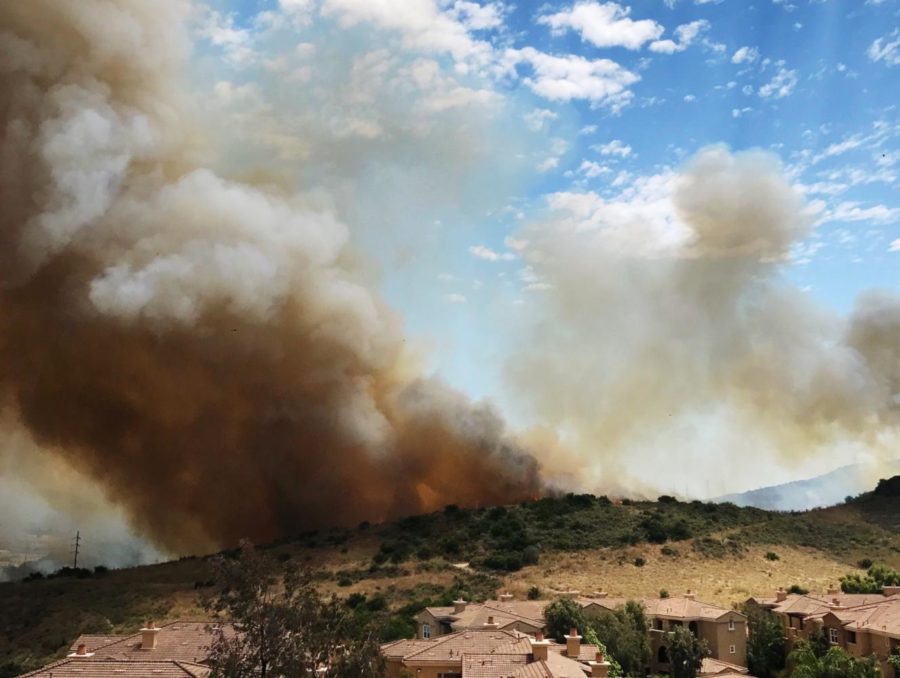
By, Savi Raghuraman | Writer & Lucy Terry | Writer
September 13, 2017
7,000 acres in Los Angeles were incinerated by the La Tuna fire, making it the largest fire in Los Angeles in 50 years. After a long week of battling the fire, on September 8th, it was announced the firefighters had the blaze 90% contained. Yet this is only one small victory against Mother Nature, as fires continue to rage up and down the Western coast, while hurricanes and storms batter the Gulf.
There were no lives lost to the La Tuna fire, but five homes have been destroyed. Los Angeles Mayor Eric Garcetti declared a state of emergency for the city on September 2nd. The next day, California Governor Jerry Brown followed suit, emphasizing the threat to Los Angeles, as well as other Madera, Mariposa, and Tulare counties. Areas in Los Angeles and a few surrounding communities, such as Glendale and Burbank, were forced to evacuate. The fire was initially so treacherous that there was a complete shutdown of the 210 Freeway.
Similar to most of California, San Clemente residents are no stranger to the flames. Just this past summer, two fires raged in our small coastal desert, one of them dubbed the Cristianitos fire. The majority of the damage took place on Camp Pendleton, with 760 acres burned overall. There were no lives lost, and only one animal shelter was evacuated. Nonetheless, this reinforces the increasing prominence of fires on the dry California landscape.
Trevor Zanella, a junior at San Clemente, was at the scene of the fire. “There was a ton of smoke and ash everywhere,” he said. “From the time we parked our truck to the time we got back in, which was only a few minutes, the whole bed of the truck was covered in ash.”
The La Pata fire sparked up barely a week after the Cristianitos fire occurred. It was smaller, yet much closer to homes. It began in the afternoon and torched approximately 52 acres, coming within a half mile of local neighborhoods before it was fully contained by firefighters that evening.
Juliette Clark, a Junior and avid water polo player at San Clemente, claims “I didn’t go towards the fire, but my water polo practices were cancelled even as far away as in Santa Margarita due to the poor air quality. Then when I got to practice the next day, there were ashes in the pool and it tasted like fire.”
This summer has been the hottest in recent years, with over 4,900 fires reported by California so far in 2017. Currently, there are 20 fires burning throughout the state. Experts accredit multiple factors as causes of our susceptibility to fire, such as the fact that this past year had the wettest winter in decades. This led to a greater abundance of vegetation, which dried out in the summer’s heat and now serves as fuel for fire. As long as California continues to experience heat waves throughout September and into the later months of this year, the entire state remains unguarded against the possibility of fires.
California is not alone in this confrontation with Mother Nature. Washington and Oregon are both battling the Eagle Creek fire, which crossed the Columbia River Gorge into Washington and is now wreaking havoc on Archer Mountain. As of September 11th, the new fire on Archer Mountain was only 40% contained, while the Eagle Creek fire, in comparison, was only 7% contained. The latter has been burning since September 2nd and has destroyed 33,000 acres.
From earthquakes in places like Mexico and Idaho, to life-threatening hurricanes in the Gulf, it seems as though the world as we know it will sink under the weight of natural disasters. The fires unleashing their wrath upon the West merely add to the chaos. Only time will tell how we recuperate from this period of distress.

Leave a Reply